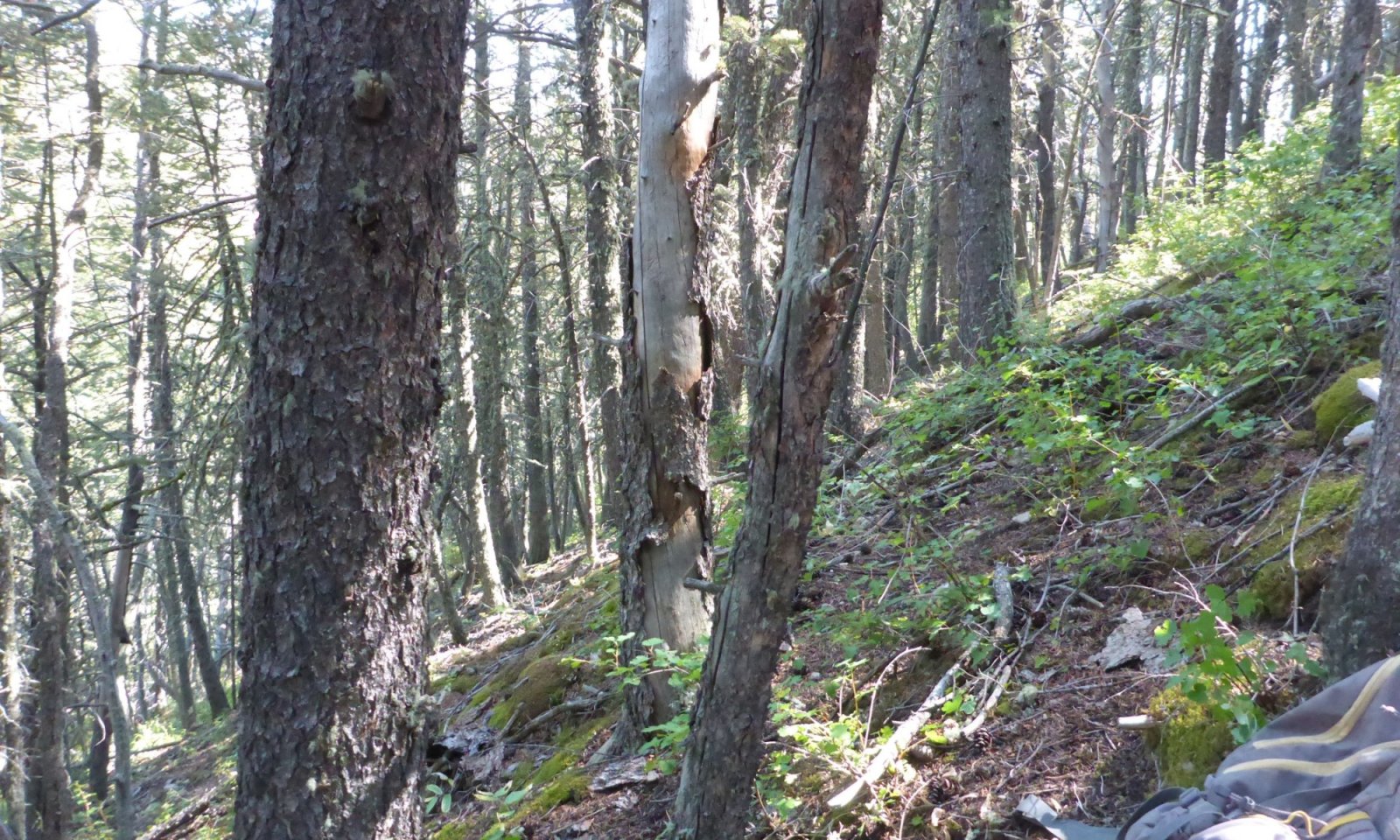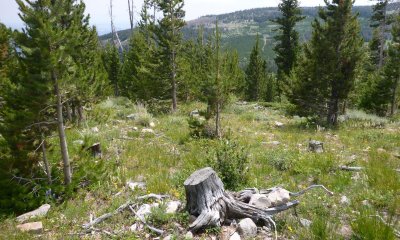
Shallow Cool Woodland Group
Scenario model
Current ecosystem state
Select a state
Management practices/drivers
Select a transition or restoration pathway
-
Transition T1A
Post disturbance impacts reducing the Douglas-fir stands, including increased fire frequency, disease, insect pestilence, and clear-cut logging.
More details -
Restoration pathway R2A
Time, management of desired species, and possibly the use of nursery stock or seeding will allow the timber stand to recover.
More details -
No transition or restoration pathway between the selected states has been described
Target ecosystem state
Select a state
State 1
Reference




Description
Natural succession of the forest stand is driven by fire or other tools to maintain canopy and stand health. The successional forest communities that are identified generally include three main community phases. The post fire shrub community is not captured in this state, but is captured in the post disturbance state.
Characteristics and indicators
The dominance of Douglas-fir in the Mature phase is followed by an opening of the canopy by fire allowing a sub-dominance of either lodge pole pine (or limber pine in lower elevations) or of quacking aspen. A variety of under story compositions can be described for this state.
Resilience management
Fire is a natural component for stand replacement and tree health. The frequency and intensity of these fires are the driving factors in the transition within and out of this state.
Submodel
Description
Stand replacement initiated by a disturbance, specifically logging or fire with additional disturbance post-fire, produces a secondary successional forest community that can broadly be described in two main community phases.
Characteristics and indicators
The dominance of the community by shrubs with a scattering (less than 10% cover) of young saplings, generally of lodge pole pine is the initial community phase. As the phase matures, the forest community shifts to a lodge pole pine forest stand with a minor component of Douglas-fir.
Resilience management
Fire is a natural component for stand replacement and tree health; however, disturbance following fire creates the transitions found in this state. Fire will continue to be a tool for forest health management within this stand.
Submodel
Mechanism
Disturbances such as increased frequency of fires, insect pestilence, disease, and clear-cut logging reduces Douglas-fir and increases the density of other tree species, including lodge pole pine and englemann's spruce.
Constraints to recovery
The lack of recovery time between disturbances, loss of viable seed sources, and climatic impacts, recovery of this site is impacted.
Context dependence
This ecological site description is a broad description and the variability of species shifts from the northern to southern extent and eastern compared to western continental divide shifts in species will vary the exact plant species, wildlife impacts, and climatic variables influencing this site.
Mechanism
With fire management, insect and disease control, and revegetation practices following timber harvest or other cover disturbances provides the recovery time to allow the natural processes to occur. In the instance that the needed seed sources or nursery crops are not present, planting or seeding may be required.
Relevant conservation practices
| Practice | External resources |
|---|---|
|
Prescribed Burning |
|
|
Critical Area Planting |
|
|
Fuel Break |
|
|
Patch-burning to enhance wildlife habitat |
|
|
Forest stand improvement for habitat and soil quality |
|
|
Wildlife corridors |
|
|
Forest stand improvement pre-treating vegetation and fuels |
|
|
Forest Stand Improvement, Prescribed burning |
Model keys
Briefcase
Add ecological sites and Major Land Resource Areas to your briefcase by clicking on the briefcase (![]() ) icon wherever it occurs. Drag and drop items to reorder. Cookies are used to store briefcase items between browsing sessions. Because of this, the number of items that can be added to your briefcase is limited, and briefcase items added on one device and browser cannot be accessed from another device or browser. Users who do not wish to place cookies on their devices should not use the briefcase tool. Briefcase cookies serve no other purpose than described here and are deleted whenever browsing history is cleared.
) icon wherever it occurs. Drag and drop items to reorder. Cookies are used to store briefcase items between browsing sessions. Because of this, the number of items that can be added to your briefcase is limited, and briefcase items added on one device and browser cannot be accessed from another device or browser. Users who do not wish to place cookies on their devices should not use the briefcase tool. Briefcase cookies serve no other purpose than described here and are deleted whenever browsing history is cleared.
Ecological sites
Major Land Resource Areas
The Ecosystem Dynamics Interpretive Tool is an information system framework developed by the USDA-ARS Jornada Experimental Range, USDA Natural Resources Conservation Service, and New Mexico State University.


